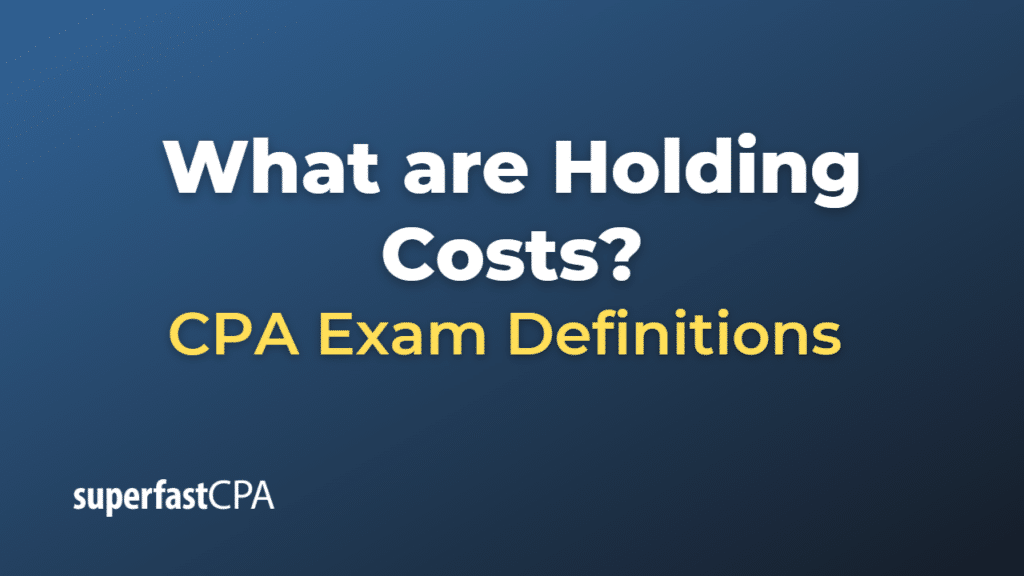Holding Costs
Holding costs, also known as inventory carrying costs, are the costs associated with storing and maintaining inventory that remains unsold. These costs are a significant component of supply chain management since they contribute to the total cost of inventory ownership, along with procurement and order costs.
Holding costs can include a variety of expenses, such as:
- Warehousing Costs: These are the costs associated with renting or maintaining a space to store the inventory. This can include utilities, rent, property insurance, and property taxes.
- Cost of Capital: This represents the opportunity cost of having money tied up in inventory that could be used elsewhere in the business.
- Inventory Service Costs: These include costs such as insurance and taxes that are directly proportional to the value of the inventory.
- Inventory Risk Costs: These are associated with risks such as obsolescence, shrinkage (theft or misplacement), and deterioration or spoilage.
- Handling Costs: These costs are related to moving the goods within the warehouse or storage facility. This might involve labor costs, as well as costs related to equipment like forklifts.
Optimizing inventory levels to minimize holding costs while still meeting customer demand is a key aspect of effective inventory management. If too much inventory is kept on hand, holding costs can become excessively high. Conversely, if too little inventory is kept, the company risks not being able to meet customer demand, which can lead to lost sales and potentially damage customer relationships.
Example of Holding Costs
Let’s consider an example of a business that sells kitchen appliances.
- Warehousing Costs: Suppose the company rents a warehouse for $5,000 per month to store their inventory of appliances. Additionally, they spend an average of $500 per month on utilities (like electricity for lighting and climate control) for the warehouse.
- Cost of Capital: Assume the company has $1,000,000 invested in its inventory. If the company could otherwise invest that money in an opportunity yielding an 8% annual return, the cost of capital is $80,000 per year, or about $6,667 per month.
- Inventory Service Costs: Let’s say the company spends $1,200 per month on insurance to protect against risks like damage or theft of the inventory.
- Inventory Risk Costs: The company realizes that about 1% of its inventory becomes obsolete or is lost due to theft or damage each month. This translates to a cost of $10,000 per month (1% of $1,000,000).
- Handling Costs: The cost of labor, forklifts, and other equipment used in the warehouse to move and manage inventory is $3,000 per month.
Adding all these costs together, the total holding costs for this company amount to $16,367 per month or $196,404 per year.
This example illustrates the different components that can contribute to holding costs. By accurately calculating and understanding these costs, the company can make more informed decisions about how much inventory to hold, when to order more inventory, and how to price their products.













